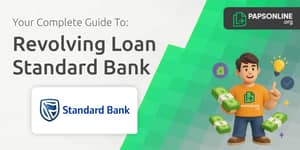
Starting a small business is as thrilling as it is challenging. From crafting a unique product vision to navigating the complexities of financing, entrepreneurs often face a critical hurdle: securing adequate capital.
In this article, we explore how personal loans can serve as a creative and accessible option for funding new ventures, offering inspiration and practical advice at every step.
The U.S. small business lending market is experiencing robust growth, driven by rising demand for startup and operating capital. In 2024 alone, the SBA approved over 70,000 loans totaling $31.1 billion—a testament to the increased appetite for smaller-dollar financing solutions.
Traditional banks and credit unions remain important players, but many startups encounter lengthy approval processes, strict collateral requirements, and high costs. This environment has spurred the rise of flexible, faster financing solutions offered by online lenders and fintech platforms, which can disburse funds in days rather than weeks.
For entrepreneurs without a lengthy track record or significant collateral, personal loans can unlock opportunities that might otherwise be out of reach. Here are some of the most compelling advantages:
While the accessibility of personal loans is alluring, it is vital to weigh potential drawbacks and legal implications. These factors will help you decide if this path aligns with your business goals and risk tolerance.
Understanding how personal loans stack up against other startup resources can guide smarter decision-making. Below is a concise comparison of popular funding routes:
When evaluating personal loans, focus on more than just the headline APR. A holistic review of terms and fees ensures you select the most cost-effective option.
Calculate the total cost including origination, late, and prepayment fees.
Verify fixed versus variable rate structures.
Confirm repayment terms and any penalties for early payoff.
Assess the lender’s reputation and customer service record.
Using personal loans for business purposes may have specific tax implications and regulatory requirements. It is prudent to:
Consult a tax professional to understand interest deductibility and reporting obligations.
Maintain clear records separating personal and business expenses.
Review state and federal guidelines to ensure compliance with lending laws.
Consider the story of Lena, a recent graduate who embarked on this entrepreneurial journey by launching a handcrafted jewelry line. With limited revenue, Lena secured a $15,000 personal loan within days, using the funds to order raw materials, build an e-commerce site, and invest in targeted social media ads.
Within six months, her business achieved consistent monthly revenue that covered loan payments and operating costs. By demonstrating reliable repayment, Lena qualified for a small-business line of credit to fund the next growth phase.
Similarly, Mark, a freelance graphic designer, tapped a personal loan to purchase high-end equipment and software. This strategic investment elevated his portfolio, attracting higher-paying clients and enabling him to triple his income in a year.
Many entrepreneurs find that combining multiple funding sources maximizes flexibility and minimizes costs. For instance, you might start with a personal loan for immediate capital, then transition to an SBA Microloan once your business reaches key milestones.
By diversifying funding streams, you can balance the speed of personal loans with the favorable terms of institutional financing, creating a robust financial foundation for long-term growth.
Follow these steps to position yourself for the best possible terms and approval odds:
The landscape of small business financing continues to evolve, with embedded lending solutions projected to reach $23.31 billion by 2031. As traditional credit tightens, personal equity and employment history will remain critical factors for accessing capital.
For many founders, personal loans offer a compelling path to transform creative visions into tangible businesses. By approaching this option with diligence, thorough research, and a clear repayment strategy, you can harness fast, accessible funding to build the foundation of lasting success.
Above all, remember that every loan is more than a simple transaction—it is a commitment to your entrepreneurial dream. With careful planning and smart execution, you can turn borrowed capital into a thriving enterprise that fulfills your professional aspirations and enriches your community.
References













